- 9 May 2020
- 6 mins read
God breathed the breath of life into man's nostrils, and man became a living soul. -- Genesis 2:7 (AV)
Perhaps the beautiful miracle of life is our breath. We might fail to pay much attention to our breath and its many wonders on a daily basis. However, it’s our breathing that enables us to live our life.
‘Prana’, a Sanskrit term for life translates to ‘The Breath of God’ which means that God created the universe with his own breath. ‘Breath’ is synonymous with ‘life’ in most religions, traditions, and languages. Therefore, it isn’t surprising that the answers to all worries and troubles indeed lie in this force of life - the breath.

How To Calm Your Mind - 6 Ayurvedic Calming Techniques
Thousands of years before modern medicine started to emphasize nurturing the mind-body connection, Indian sages had developed Ayurveda - one of the world’s most sophisticated and powerful mind-body health systems. They had found a powerful tool of meditation to balance the mind and body.
Ayurveda says that the mind and body are inseparable. When you meditate, you not only quieten your mind and expand your awareness, but also restore the natural balance of the body due to mind-body connection.
As your heart and breath restore itself to its natural pace, the production of ‘stress’ hormones is controlled and the production of neurotransmitters that enhance happiness is increased.
Powerful, isn’t it? But how can you utilize the practice of meditation to calm your mind and practice self-compassion on a day-to-day basis? We’ve compiled some of the best and most useful mind calming and breathing techniques for you.
1. Connect to the source
Why is breathing so miraculous? Because unlike all other activities that we do, it doesn’t require our will power. It keeps happening involuntarily even if we don’t pay any attention to it. Even if we try to hold our breath, we can’t do it for maybe more than a few minutes.
Which brings us to the question - Who is breathing? What is the source of the breathing process?
Can we simply observe the breath to and try to connect to this source of life force?
This is the simple practice of meditation. By simply observing the breath, without trying to control it, we are able to connect deeper to ourselves and connect with the life force. This connection, the experience, and the awareness it brings help us calm our minds.
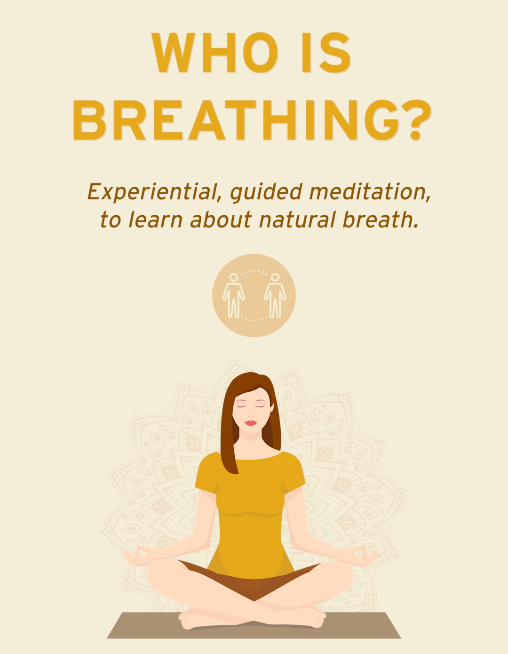
Also read - Ayurveda for your lungs
2. Find The Peace Within
Have you ever noticed that in any given situation, two different people seem to have strikingly different reactions? Imagine two people sitting on a bench in a park when it suddenly starts to rain. While one person could express joy at the wonderful weather, the other person could be complaining about getting drenched in the rain.
This simple example exhibits how the inner turmoil within us exhibits itself on a day-to-day basis. If we are not at peace within, we are more likely to react negatively to the trying circumstances in our life, staying caught in a loop of negativity.
How to calm your mind? How to escape this loop of negativity? Here’s a meditation technique that we can use to find peace within. It starts with focussing on our breath and observing it. Take a gentle inhalation from the nose and three gentle exhalations from the mouth.
Once you are able to concentrate deeply, bring your attention to the center of the forehead between our eyebrows, to your spiritual eye. This is your doorway to higher awareness. When you bring your attention to the spiritual eye by mentally gazing upwards, try to release tension in your forehead and try to imagine looking at a point at a distance. Perhaps, you can imagine looking at the sunrise or a distant mountain.
Feel the expanding calmness and experience the universal peace that is always within you. Gently open your eyes.
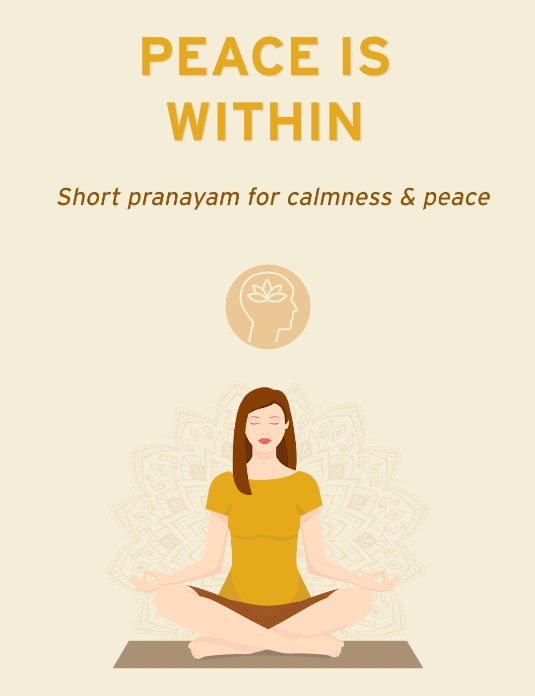
3. Ask Yourself - Where’s Your Mind?
Every now and then, it’s helpful to stop and ask yourself the simple question - How’s your mind and acknowledge how you’re feeling. Follow this with a series of slow deep breathing. Use your stomach to increase the capacity and ensure that every inhale and exhale takes about 3 seconds each. You can count to three in your head. Repeat the breath cycles several times to feel calm.
This is a simple technique that you can do anytime, in the middle of any kind of work that you’re engaged in. It doesn’t require a lot of time but it’s helpful nevertheless.
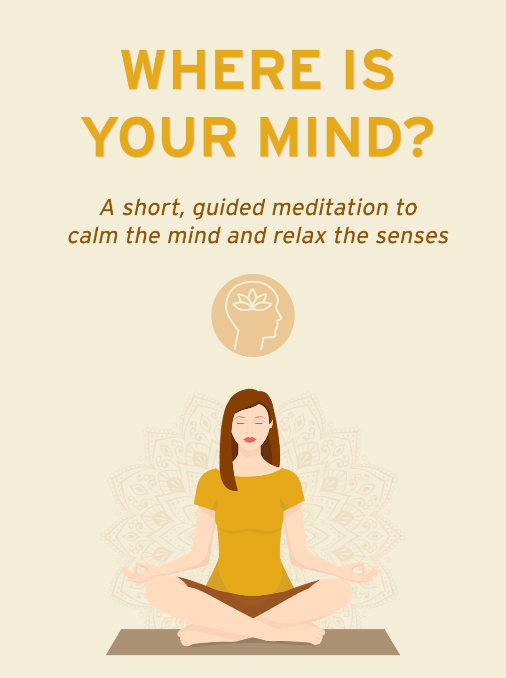
4. Meet Your Energy
Sometimes, we tend to feel disconnected from ourselves. We feel disoriented and unsure of what we want to do. What this means is that we are not centered. It means that our energy is going outward instead of flowing through us. It’s possible to bring back the energy to our calm center and push it up through us by creating magnetism through inhalation and exhalation.
Simply close your eyes and inhale to expand your stomach. Experiencing the energy rising, magnetizing our center. When you exhale, imagine the energy descending your center. You can visualize this energy as light. Post this visualize yourself standing strong amidst storm connected to your center.
Through this technique, you will be able to get rid of negative emotions and recharge yourself with positive energy.
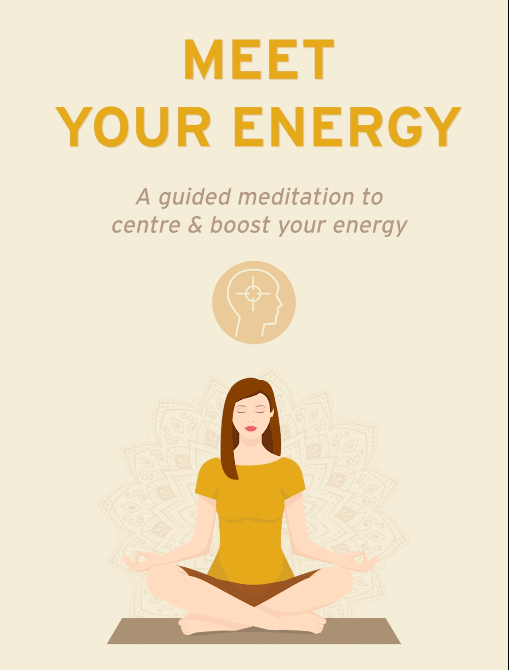
5. Nadi Shodhanam Pranayam To Balance The Mind
Throughout the day, the amount of air we breathe through our two nostrils varies. One is sometimes more open than the other. This Pranayam harmonizes the flow of breath between these two nostrils and also calms us down by balancing our energy,
For this Pranayama, create a hand mudra by closing the first two fingers. We begin by pressing our thumb to our right nostril and slowly inhale from our left nostril. Now, we hold the breath for three seconds by closing the mudra and bringing our little finger to our left nostril. Then, we lift our thumb to exhale from the right nostril. We repeat this exercise from the alternate nostril and repeat the complete cycle multiple times. Remember to inhale from one and exhale from another.
Whenever you feel very chaotic in your mind, you can try a modification called Chandrabhedi. In this technique, we always inhale from the left nostril and exhale from the right nostril. Repeat this cycle until you feel a sense of calm and centredness.
6. Bhramari Pranayam To Cool The Brain
This cooling breathing technique is especially useful for cooling the mind after a day of strenuous mental activity. To start this Pranayama, we use our thumbs to close our ears and rest our fingers gently on our eyes.
Then, we use our exhalation breath to make a buzzing sound from our throat that reverberates through our ears. You can try doing this with multiple exhalation cycles until you experience a sense of coolness and calmness.
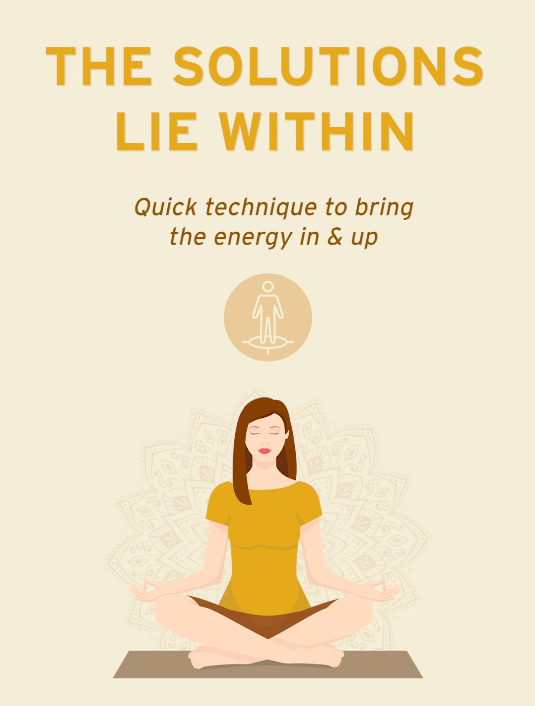
How To Calm Your Mind - The Solution Lies Within Us
To conclude, we would like to remind you that even in our most difficult circumstances, the solutions lie within us. Meditation techniques help us strengthen the frontal lobe of our brain which has all the wisdom we need to find the answer to our questions. This is the reason we often tend to look up when trying to think of a solution to a problem.
This frontal lobe is the seed of concentration. When we develop it, it gives us increased calmness and mental clarity, which in turn helps us make better decisions. Our stress level goes down. We are able to control our reactions and improve the quality of our relationships.
It isn't merely about - how to calm your mind. In your breath, you hold the answers and power to connect with the life force to transform your entire life.
Shreya Dalela is a certified Yoga instructor and a professional dancer trained at The Danceworx. She’s passionate about Ayurveda and holistic living with over 6 years of experience in doing extensive research and content creation in the domain.

An ayurveda doctor with 14 years of experience in yoga, panchakarma and general wellness. Currently working with Kama Ayurveda, analysing and remediating dermatological concerns and queries of the consumers via in-store, virtual and IVR consultation.




















